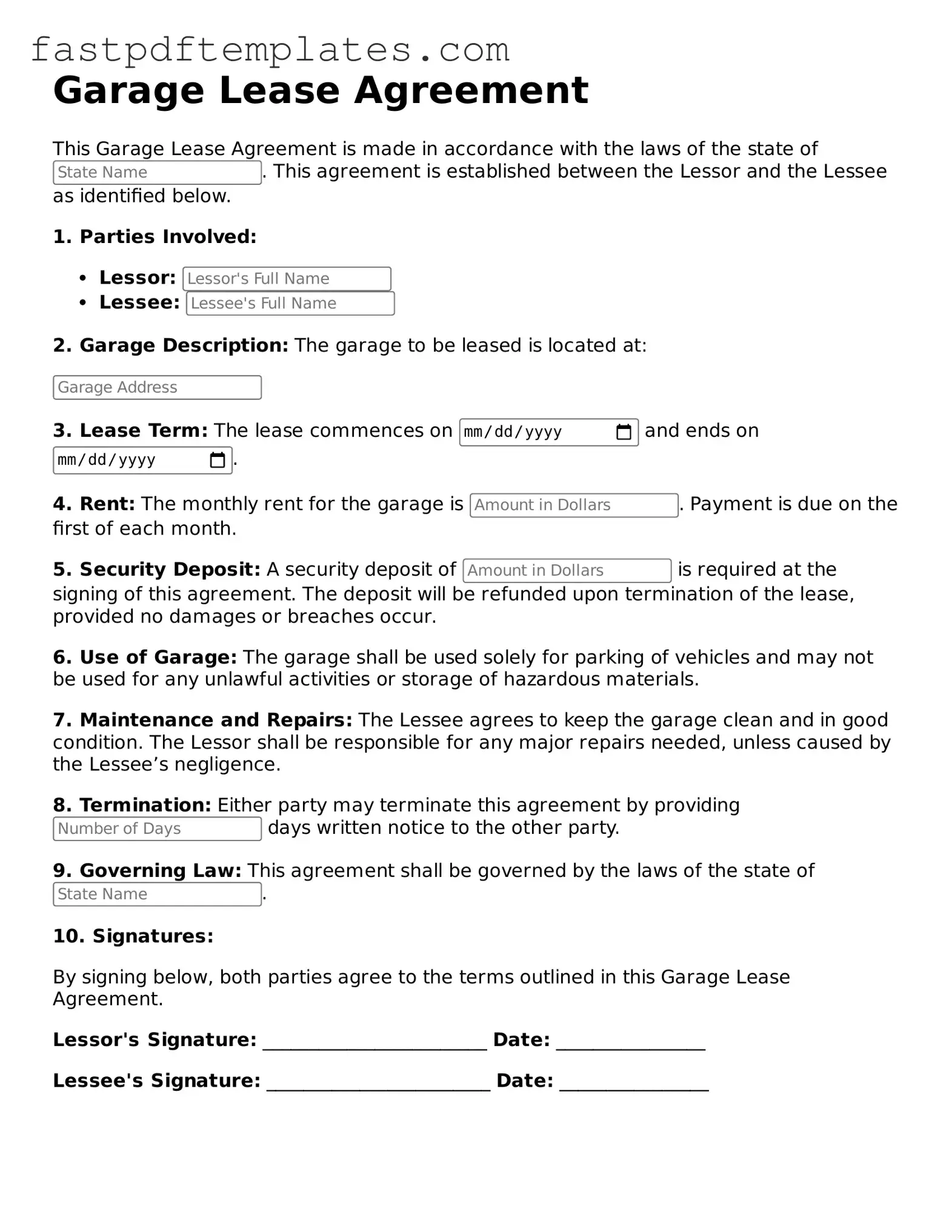A Carport Lease Agreement is similar to a Garage Lease Agreement in that both documents outline the terms under which a vehicle can be parked in a designated space. While a garage offers enclosed protection from the elements, a carport typically provides a roof with open sides. Both agreements specify the rental period, payment terms, and responsibilities of both the landlord and tenant, ensuring clarity and protection for both parties involved.
A Parking Space Rental Agreement serves a similar purpose to a Garage Lease Agreement but is often used for outdoor spaces. This document details the rental terms for a specific parking spot, which may be in a lot or along a street. Like a garage lease, it includes information about the rental fee, duration, and any restrictions on vehicle types, making it essential for both landlords and tenants to understand their rights and obligations.
A Storage Unit Rental Agreement shares similarities with a Garage Lease Agreement, particularly in the context of storing vehicles or personal items. This document outlines the terms for renting a storage unit, including access times, fees, and responsibilities for maintenance. Both agreements aim to protect the property owner while providing the renter with a secure space for their belongings or vehicles.
A Commercial Lease Agreement can also be compared to a Garage Lease Agreement, especially when the garage is used for business purposes, such as storing a fleet of vehicles. Both documents detail the terms of use, payment, and duration of the lease. In a commercial context, additional considerations like zoning laws and insurance requirements may come into play, but the fundamental principles remain similar.
A Residential Lease Agreement, while generally focused on living spaces, can sometimes encompass garage rentals as part of the overall property lease. This document outlines the terms of renting a residential property, including any attached garages. Both agreements emphasize the importance of clear terms regarding payment, maintenance, and tenant rights, ensuring a smooth rental experience.
A Vehicle Lease Agreement is another document that shares some characteristics with a Garage Lease Agreement. Although it pertains to leasing a vehicle rather than a parking space, both documents involve terms related to usage, payments, and responsibilities. Understanding these agreements helps individuals navigate their rights and obligations, whether they are leasing a vehicle or a space to park it.
A Lease-to-Own Agreement can also be likened to a Garage Lease Agreement, particularly when the garage is part of a property that a tenant may eventually purchase. This document allows tenants to rent with the option to buy, outlining the terms of both leasing and potential purchase. Similar to a garage lease, it includes details about payments, maintenance responsibilities, and conditions for transitioning from a lease to ownership.
